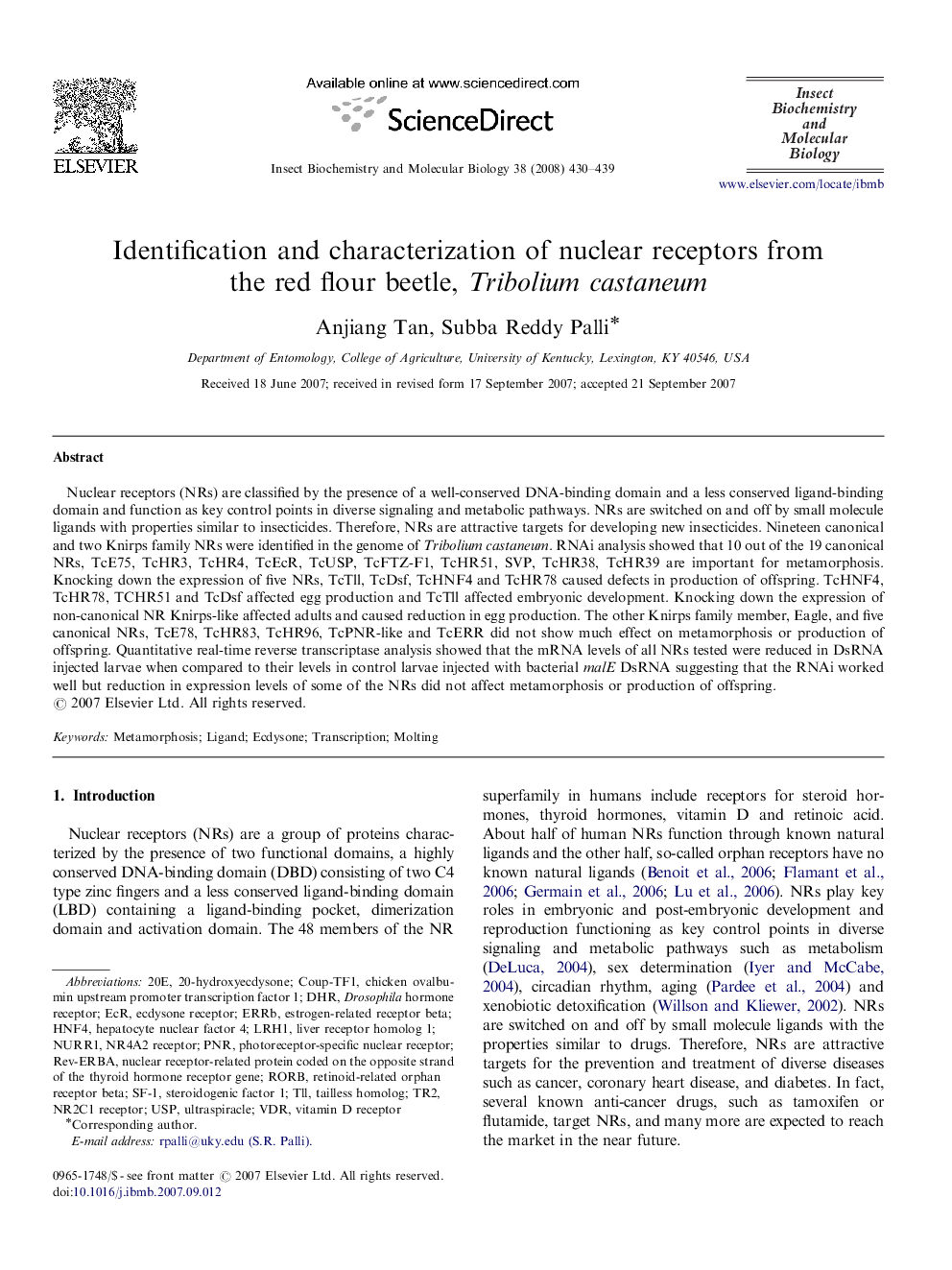| Article ID | Journal | Published Year | Pages | File Type |
|---|---|---|---|---|
| 10824228 | Insect Biochemistry and Molecular Biology | 2008 | 10 Pages |
Abstract
Nuclear receptors (NRs) are classified by the presence of a well-conserved DNA-binding domain and a less conserved ligand-binding domain and function as key control points in diverse signaling and metabolic pathways. NRs are switched on and off by small molecule ligands with properties similar to insecticides. Therefore, NRs are attractive targets for developing new insecticides. Nineteen canonical and two Knirps family NRs were identified in the genome of Tribolium castaneum. RNAi analysis showed that 10 out of the 19 canonical NRs, TcE75, TcHR3, TcHR4, TcEcR, TcUSP, TcFTZ-F1, TcHR51, SVP, TcHR38, TcHR39 are important for metamorphosis. Knocking down the expression of five NRs, TcTll, TcDsf, TcHNF4 and TcHR78 caused defects in production of offspring. TcHNF4, TcHR78, TCHR51 and TcDsf affected egg production and TcTll affected embryonic development. Knocking down the expression of non-canonical NR Knirps-like affected adults and caused reduction in egg production. The other Knirps family member, Eagle, and five canonical NRs, TcE78, TcHR83, TcHR96, TcPNR-like and TcERR did not show much effect on metamorphosis or production of offspring. Quantitative real-time reverse transcriptase analysis showed that the mRNA levels of all NRs tested were reduced in DsRNA injected larvae when compared to their levels in control larvae injected with bacterial malE DsRNA suggesting that the RNAi worked well but reduction in expression levels of some of the NRs did not affect metamorphosis or production of offspring.
Keywords
Related Topics
Life Sciences
Agricultural and Biological Sciences
Insect Science
Authors
Anjiang Tan, Subba Reddy Palli,
